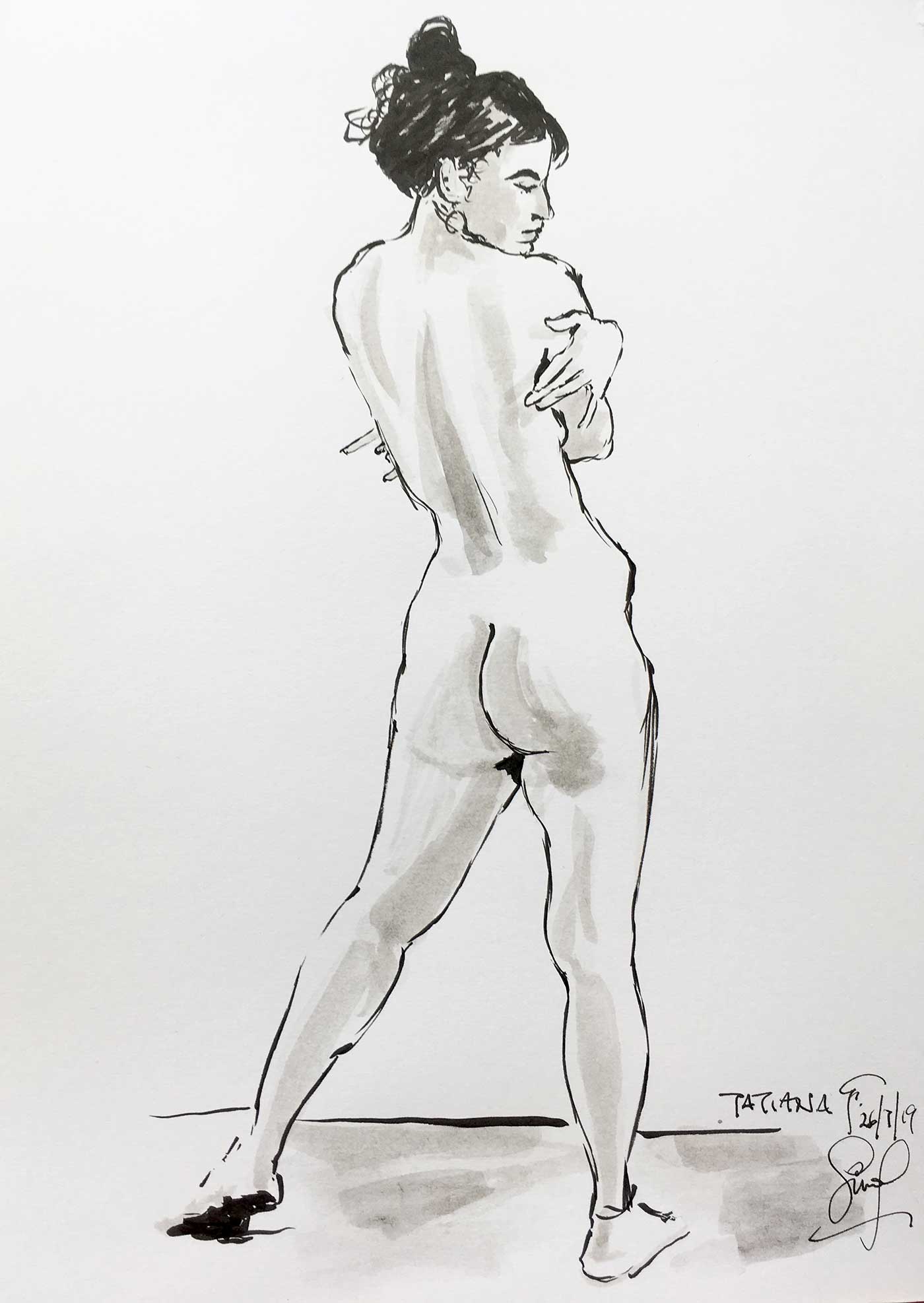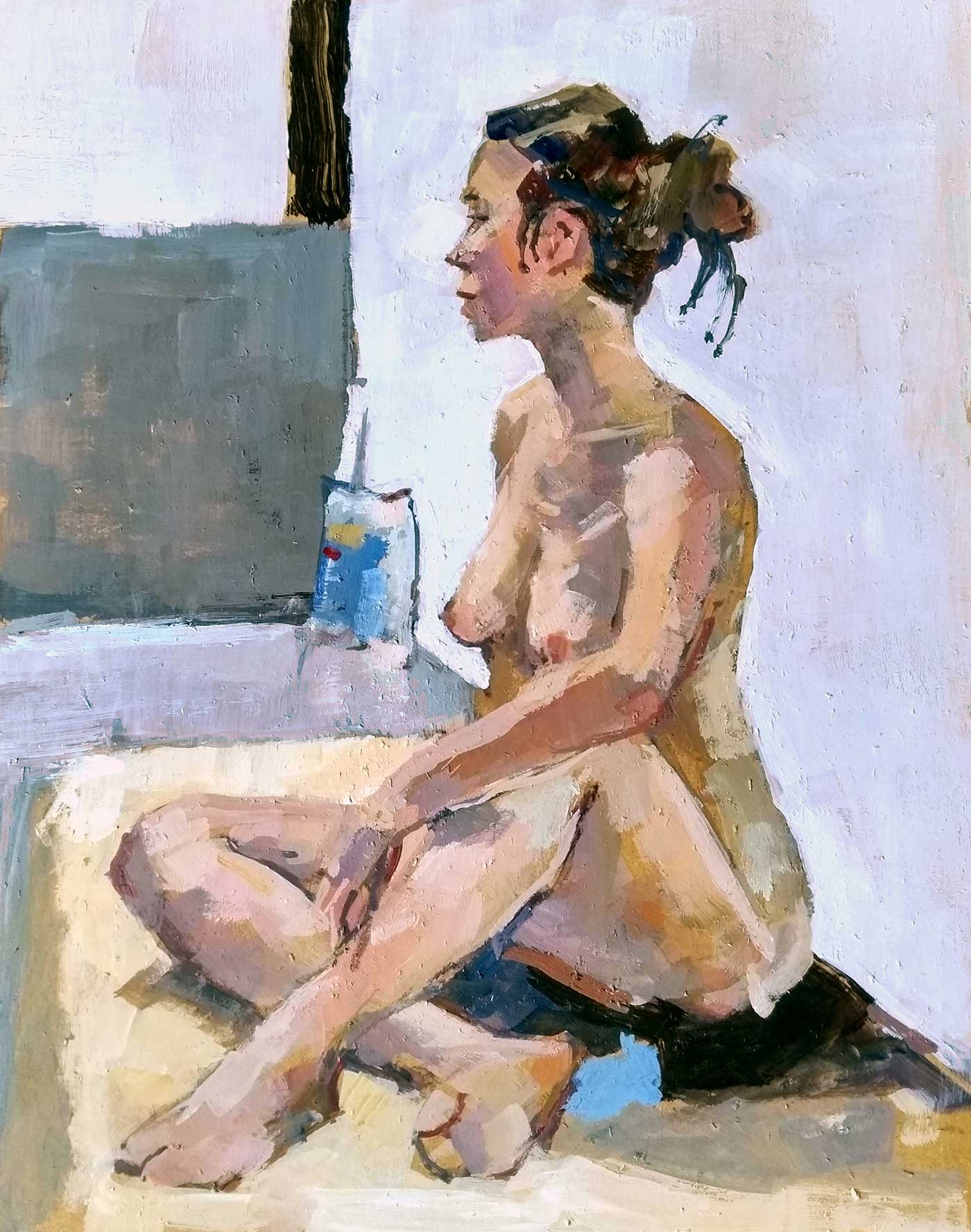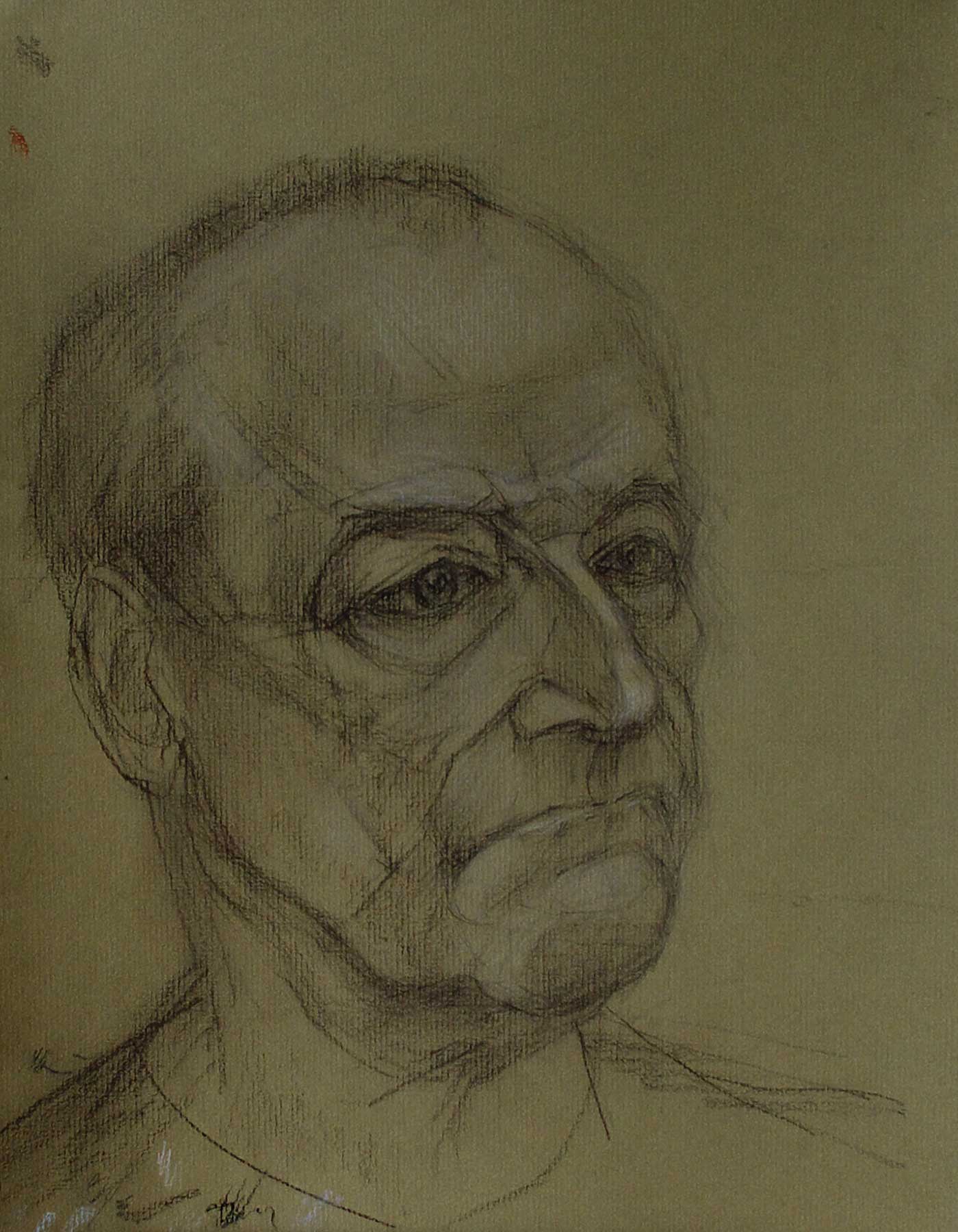how to improve figure drawing
With the Hesketh Hubbard Art Society, London's largest life drawing group, exhibiting this week, Mall Galleries' Gallery Assistant, Charlotte Higgs, reviews some of the best figurative drawing tips featured in our bookshop selection.
Whether you're a complete beginner or a professional artist, joining a life drawing class can not only improve your overall artistic skills, but can also provide an opportunity to build self-confidence and meet like-minded people in a calm, relaxed environment. Formed in 1903, the Hesketh Hubbard Art Society is London's largest life drawing group. As advocates of the importance and benefits of the practice of life drawing, we felt it fitting to share hints and tips from some of the artists and authors stocked in our bookshop.
1. Practice until it becomes instinctual
Practice makes perfect is the classic cliché across many disciplines, but in the case of life drawing, progress isn't about the pursuit of perfection, but learning to lean into the flaws of your sketches and making the mistakes work.
"Through observational drawing, we refine our hand-eye coordination and learn to override what our brain is telling us – to trust our eyes and draw what we are actually seeing and not what we think we see." – Drawing Hands and Feet: a Practical Guide, Eddie Armer

Simon Whittle HH Tatiana Ink, 40 x 30 cm, £250
2. Know your proportions
Before we start drawing directly from the model it helps to have a basic understanding of the body's proportions. Whilst we are all unique and come in an array of different types, a general awareness of standard proportions can better inform our understanding of the figure. For example, Civardi discusses how to begin measuring the body accurately in Drawing: a Complete Guide:
"...when standing upright the unit of measurement [to base all other proportions on] is the head, [which is] measured from the tip of the chin to the top of the skull. The height of the body corresponds to around seven-and-a-half times [this] unit of measurement…" – Drawing: a Complete Guide, Giovanni Civardi
 John R Govett HH Sophie Ink, 30 x 36 cm, £300
John R Govett HH Sophie Ink, 30 x 36 cm, £300
3. Familiarise yourself with different perspectives
Once you've grasped proportions, understanding perspectives is the next obstacle to overcome. When you're working in front of a live model who is alternating between poses, some parts of the body will appear elongated or foreshortened depending on where you are positioned in front of them. Eddie Armer explains:
"Remember that proportions are altered when foreshortening takes place. A drastically foreshortened limb may look unrecognizable as a body part, so trust your eyes and draw it as the distorted shape that you are seeing. Cross-reference and compare the sizes of other parts of the body to whatever you are focusing on. For example, the width of the thigh may be a similar size to the width of the wrist, or the foot may be as large as the torso in a foreshortened pose." – Eddie Armer, 'Drawing Hands and Feet: a Practical Guide'

Dmitri Shaklanoff Barrie Pastel 30 x 40 cm, £200
4. Master the basics of portraiture
Artists of all levels and experience encounter difficulty with portraits as the pressure to capture a resemblance to the model can be a little overwhelming. Much like the body, the face can also be broken down and simplified using a grid which can be used to practice at home with a mirror to draw your own portrait. If you're feeling bold after a few attempts give yourself alternating time limits resembling those used in life drawing; 2 minutes, 5 minutes, and so on. Eddie Armer says:
"People's heads vary in size, characteristics and shape but can all bought within a useful proportion framework to simplify and co-ordinate its structures. The face can be divided into three sections… draw two horizontal lines - one passing along the line of the eyebrows and the other touching the base of the nose… two vertical lines passing through the centre of the pupils to enclose the nose and lips." – Eddie Armer, Figure Drawing: a Complete Guide

Owain HuntPainter's Mother (Preparatory Study) Graphite, 35 x 25 cm, £450 &Painter's Mother Oil on canvas, 48 x 38 cm, £1,850
5. Don't shy away from the difficult bits
When it comes to drawing the figure, recording hands and feet has become the artist's 'Achilles heel' (no pun intended). Some of us find the challenge so frustrating we shy away from it completely, deliberately avoiding them altogether or conveniently allowing ourselves to run out of time to attempt them. If you find yourself relating to this a little too much Eddie Armer has written an entire book dedicated to the subject. 'Drawing Hands and Feet: a Practical Guide' illustrates two simple, but effective, methods to try at home using your own hands before applying them to a model.
The Box Method recommends "representing the subject as a series of boxes it becomes easier for the artist to visualise the form and give the drawing volume from the outset... Reference your own hand and represent them purely as boxes with no added detail... Once you're happy with the pose begin to shape the boxes… round off the fingertips and add curves to the straight lines to make (them) more realistic." – Eddie Armer, Figure Drawing: a Complete Guide
The Hesketh Hubbard Art Society's annual exhibition is on view until 18 August.
Plan your Visit
The following titles featured in this post are available from the bookshop along with a selection of other practical art titles:
- Drawing Hands and Feet: a Practical Guide, Eddie Armer, £12.99
- Drawing the Female Nude, Giovanni Civaldi, £12.99
- Drawing the Male Nude, Giovanni Civaldi, £12.99
- Figure Drawing: a Complete Guide, Giovanni Civardi, £9.99
how to improve figure drawing
Source: https://www.mallgalleries.org.uk/about-us/blog/5-tips-improve-your-life-drawing
Posted by: stewartfortalwyneho.blogspot.com

0 Response to "how to improve figure drawing"
Post a Comment